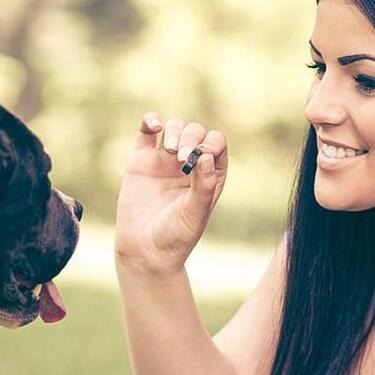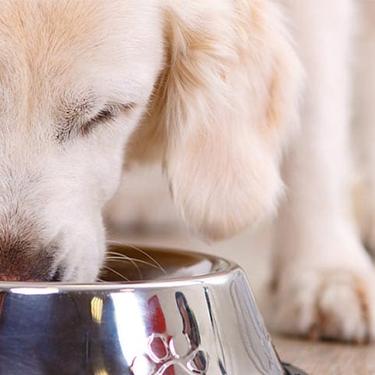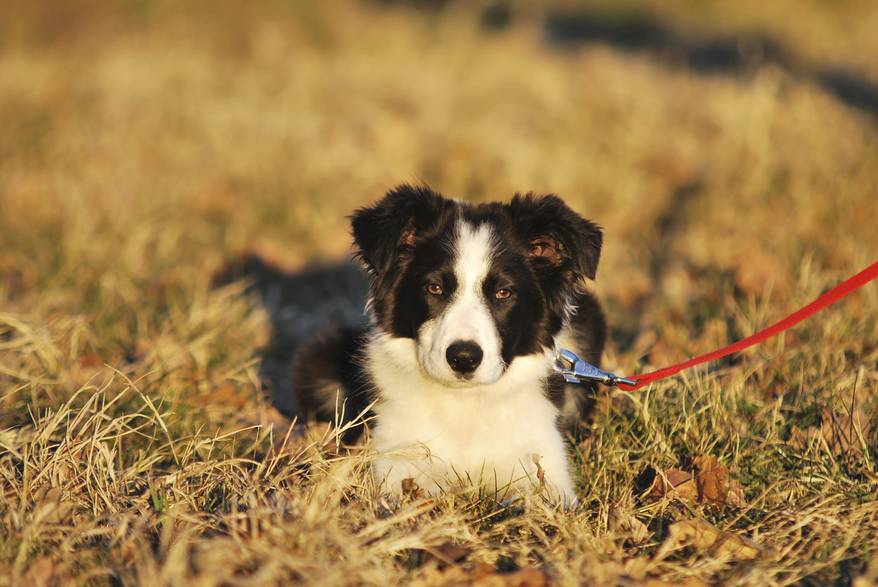
-
Find the right food for your pet
Take this quiz to see which food may be the best for your furry friend.
Find the right food for your pet
Take this quiz to see which food may be the best for your furry friend.
Featured products
 Adult Healthy Cuisine Roasted Chicken, Carrots & Spinach Stew Dog Food
Adult Healthy Cuisine Roasted Chicken, Carrots & Spinach Stew Dog FoodDelicious roasted chicken paired with tender vegetables in a succulent stew
Shop Now Adult 7+ Perfect Digestion Chicken, Whole Oats & Brown Rice Recipe Dog Food
Adult 7+ Perfect Digestion Chicken, Whole Oats & Brown Rice Recipe Dog FoodScience Diet's breakthrough nutrition supports ultimate digestive well-being & healthy microbiome for dogs age 7+
Shop Now Small & Mini Savory Stew with Chicken & Vegetables Dog Food
Small & Mini Savory Stew with Chicken & Vegetables Dog FoodA delicious complement to the nutrition of Science Diet Small & Mini 7+ dog food
Shop NowFeatured products
 Adult 7+ Senior Vitality Chicken & Vegetable Stew Cat Food
Adult 7+ Senior Vitality Chicken & Vegetable Stew Cat FoodImproves Everyday Ability to Get Up & Go
Shop Now Adult Savory Entrée Can Variety Pack Cat Food
Adult Savory Entrée Can Variety Pack Cat FoodPrecisely balanced nutrition with the delicious taste of savory minced chicken to help fuel the energy needs of cats during the prime of their life
Shop Now Adult 7+ Tender Tuna Dinner Cat Food
Adult 7+ Tender Tuna Dinner Cat FoodWith delicious chunks in a decadent gravy
Shop Now -
Dog
- Dog Tips & Articles
-
Health Category
- Weight
- Food & Environmental Sensitivities
- Urinary
- Digestive
- Joint
- Kidney
-
Life Stage
- Puppy Nutrition
- Adult Nutrition
- Senior Nutrition
Cat
- Cat Tips & Articles
-
Health Category
- Weight
- Skin & Food Sensitivities
- Urinary
- Digestive
- Kidney
-
Life Stage
- Kitten Nutrition
- Adult Nutrition
Featured articles
 Do Dogs and Cats have Belly Buttons?
Do Dogs and Cats have Belly Buttons?Learn whether cats & dogs have belly buttons like humans, what the function is, and if there are any health concerns associated with it.
Read More Does My Pet Hate Me?
Does My Pet Hate Me?Learn tips for bonding with your pet if you've ever thought, 'My dog doesn't like me, or 'Why do I have a standoffish cat?'
Read More Why Are Dogs and Cats So Cute?
Why Are Dogs and Cats So Cute?If waggy puppy dog tails and furry kitten yawns make you swoon, you're not alone. Why are cats so cute? And, dogs too! Let's find out!
Read More -


Are you training your puppy to walk on the leash? Or — let's be honest here — is your puppy training you?
Leash training can be difficult, but it's a necessary skill if the two of you are to enjoy walks and adventures together. It's also a skill you should start practicing as soon as you bring home your new furry friend.
How to Leash Train a Puppy
- Get him used to a collar and leash: Let your pup get used to a collar and leash before attempting to walk him. Let him drag the leash around the house attached to his collar. You want him to be comfortable with the leash, not afraid of it.
- Have short training sessions in familiar places: Your puppy has a short attention span, so don't expect to keep his interest in training for long. Start with just a walk around the house or the backyard— a place where he is already familiar with the smells. That way he won't be as inclined to break off in a dozen directions to smell exciting new odors.
- Praise good behavior: When your dog is walking alongside you on a loose leash — also called "heeling" — heap on the praise and reward him with the occasional treat. Never pull your dog along. If he resists leaving a spot, pulling on the lead can potentially injure him (or you if you're walking a bigger dog). Instead, focus on rewarding him for coming when you call him to keep walking along. If he is particularly persistent, you might have to intervene and redirect his attention back to the walk and away from the thing with all the smells.
- Keep a short leash: While this is often seen as a negative to humans, keeping your dog on a short leash is integral to leash training success. The less room your dog has to stray away from your side, the easier it is for him to learn to walk next to you. As he starts to get the hang of things you can let out the lead a little bit, either with a retractable leash or by giving some slack from your hands.
- Keep him at your side: Similar to a short leash, walking with your dog at your side instead of in front of you allows you to control his direction. When dogs are allowed to walk out in front or behind, they tend to wander off and smell everything. This will also help prevent the leash from becoming tangled underneath him. Again, you can start to be more lenient with him as he becomes more trained, but it's best to keep him close while still a puppy. Remember dogs are pack animals. If he sees you as the pack leader, he will eventually fall in line and become the perfect walking partner.
- Give him time to do his business: For many dogs, a nice long walk is a chance for him to relieve himself. However, dogs naturally like to mark their territory, so they may want to sniff around to find the perfect spot. If you notice that your dog needs to relieve himself, you can stop walking and give him more leash to explore and do his business. Once he is done, be sure to reward him with praise or treats (after all, you're likely going through potty training at this time too). One thing to keep in mind is that dogs do not always evacuate their bladder at once, so some dogs may look for multiple spots to urinate. It is vital that you reward him only the first time, otherwise he will start to understand positive associations with marking multiple times. This makes for a much more difficult walk. When he understands he only gets the one opportunity to relieve himself, he will start to walk better.
- Find a pace: Dogs are naturally curious so dogs tend to want to rush to certain spots on your walk, or linger in their favorite spots. It's important to pick a pace that is comfortable for both of you. You never want him to pull or lag behind as this is where injuries can occur. If you notice your dog struggling to keep a certain pace, stop and wait for him to come back to you and then reestablish the comfortable pace.
Sounds easy, right? Not so fast. Here are a few other factors you should know.
Choosing the Right Collar or Harness, and Leash
There are plenty of different types of collars, harnesses and leashes on the market. How do you know which one is right to leash train your puppy.
Neck collars are the most common choice and a fine one for dogs who aren't inclined to pull. Harnesses have become more and more popular in recent years and are considered by trainers to be an excellent tool in leash training dogs, because a harness won't injure a dog's neck or windpipe if he pulls. Harnesses are also less likely to get tangled beneath their feet as the leash attaches on their back, rather than the neck, which can spin to the front during the walk.
You will also find, perhaps surprisingly, a lot of different leash choices — just to get started, there's retractable, chain, adjustable and multiple dog leashes. Some trainers prefer a slip leash to train a puppy to heel because it gives the walker more control than a standard leash. But if your dog pulls, a harness or head halter is a better choice because it won't hurt or choke him.
Make sure to also select a leash that is appropriate for your dog. Too large of a leash may cause unnecessary weight to your small dog, and too small of a leash could spell disaster for you if he sees wildlife he wants to go investigate on his own. After all, it makes sense that the right leash plays a big role in leash training your puppy.


Tasty Tips
Stopping Unwanted Behaviors
Dogs have all sorts of bad habits on walks. One of the most common is pulling. If your dog pulls, give him less slack on the leash. The more lead he has, the more permission he thinks he has to explore. In addition, if a dog pulls, immediately stop walking and use a verbal cue like "oops" or "no pull." Then wait for a loose leash before continuing forward. Remember in leash training — just like with any other training— to use treats and positive reinforcement when your dog is behaving correctly.
If you notice your dog is pulling for a certain reason: wildlife, other dogs, strangers, etc., it might be best to walk another direction or wait until the new discovery has passed. Again, you want to avoid injuring him, or letting him think that pulling is okay. If you allow him to pull and try and walk faster to keep up with him, you're teaching him that all he has to do is speed up to get to thing quicker, which can turn your leisurely walk into a full-on sprint.
Walking with Your Pack
While a puppy is being leash trained, it is advisable to walk him alone, even if you have other dogs in the home, Mychelle Blake, a dog training expert, tells Animal Wellness magazine. Having more than one dog can be distracting, as well as dangerous. Until you know your puppy is trained and are familiar with his temperament and moods, you should walk him by himself. Once you think he's ready, you can walk multiple dogs at once on the same lead by adding something called a "coupler," which separates leashes to reduce tangling.
Walking at Night
It is likely that at some point you will have to walk your puppy at night. It is even more imperative to follow good leash training tips when walking a dog at night because he is more likely to pick up on things you can't see like night-life. You don't want him to pull and yank the leash out of your hands and make it difficult to find him in the dark. Again, keep him close and walking on a pathway, preferably in view of light (either from carrying a flashlight or in the glow of streetlights).
Taking walks together is a valuable bonding time for you and your pup. By learning how to leash training your puppy, you strengthen and deepen the relationship with your favorite walking partner.
For more puppy training tips and tricks, take a look at our more comprehensive puppy training basics article.


Kara Murphy is a freelance writer and pet parent who lives in Erie, Pa. She has a goldendoodle named Maddie.
Related products
Related articles

Proper nutrition for your pregnant or nursing dog is vital to her and her puppy's health. Learn what you should do provide her with the proper nutrients.

Learn about choosing the right dog food to help ensure your adult dog will receive the correct balance of nutrition.

Learn how today's wet dog food blends have gotten a face lift, and how you'll provide your dog the nutrition he needs in the form he loves.

Learn the the dangers of feeding your dog chocolate, which types are most dangerous, and what to do if you discover that they have consumed chocolate.

Put your dog on a diet without them knowing
Our low calorie formula helps you control your dog's weight. It's packed with high-quality protein for building lean muscles, and made with purposeful ingredients for a flavorful, nutritious meal. Clinically proven antioxidants, Vitamin C+E, help promote a healthy immune system.
Put your dog on a diet without them knowing
Our low calorie formula helps you control your dog's weight. It's packed with high-quality protein for building lean muscles, and made with purposeful ingredients for a flavorful, nutritious meal. Clinically proven antioxidants, Vitamin C+E, help promote a healthy immune system.


